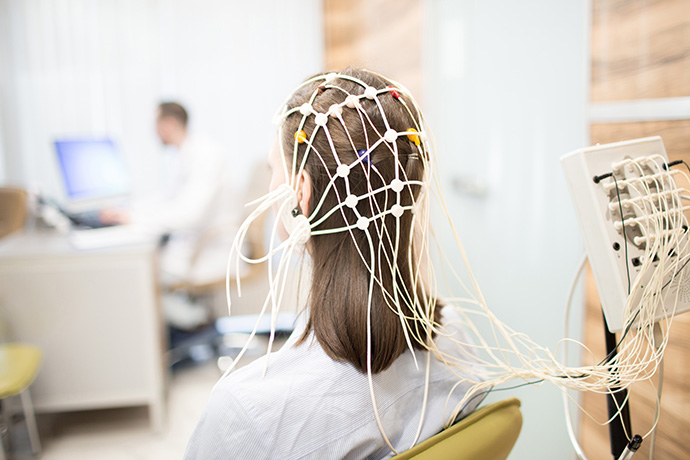New research from Birkbeck, University of London has shown for the first time that three sub-groups of autism can be identified from measuring brain activity. Importantly, the research also showed that brain activity can predict how social skills develop. This new way of predicting how social skills might naturally change could help provide tailored care, and therefore significantly improve quality of life for autistic people in the longer term.
The research involved participants being shown pictures of faces repeatedly while their brain activity was recorded. Averaging together the brain responses to each face revealed a specific brainwave pattern that appeared around 170 milliseconds after each face appeared.
The study confirmed that, at a group level, autistic people tend to process faces differently to non-autistic people: on average, autistic people show a short lag before the pattern appears. These differences are linked to activity in specific social brain regions and to genetic features linked to autism. The researchers also found there were three distinct subgroups within the autistic participants.
In a follow-up study of the autistic participants after 18 months to 2 years, they found that each individual’s original brain lag time predicted how their social skills changed. This may help us tailor support for individuals in the future because it could help in individual decision-making about the need for socially targeted support strategies.
Lead researcher Professor Emily Jones, Professor of Translational Neurodevelopment at Birkbeck, University of London, said: “Around 1% of the UK population are autistic, and typically respond differently to social interactions. They also tend to have different communication styles, as well as patterns of interests and sensory difficulties. The way in which different people experience autism varies widely from one person to another. Our findings could eventually be used to tailor support more effectively and help increase mental wellbeing and quality of life for autistic people. This is important because difficulties with social development may lead to an increased chance of isolation and loneliness, which may in turn contribute to the higher levels of anxiety and depression reported by autistic people.”
The research forms part of the Autism Innovative Medicine Studies–2–Trials (AIMS-2-TRIALS) project, which includes a large-scale collaboration across Europe called the Longitudinal European Autism Project (LEAP) that aims to improve outcomes for autistic people.
The Central Institute of Mental Health (CIMH) is a partner in this largest autism study worldwide and is involved as an active centre in the now published study. Researchers at the CIMH are conducting measurements of brain activity in test subjects in a follow-up study lasting several years and are analysing the data. "The results of the study are relevant because reaction time to faces could be a first biomarker that can improve the power of clinical studies on autism. This could help us to diagnose autism spectrum disorder at an early stage and eventually develop targeted, individually adapted treatment options," said Prof. Dr. Dr. Tobias Banaschewski, co-author of the study and Medical Director of the Department of Child and Adolescent Psychiatry and Psychotherapy at the CIMH.
The research results were published in the journal Science Translational Medicine.
Publication:
Mason L, Moessnang C, Chatham C, Ham L, Tillmann J, Dumas G, Ellis C, Leblond CS, Cliquet F, Bourgeron T, Beckmann C, Charman T, Oakley B, Banaschewski T, Meyer-Lindenberg A, Baron-Cohen S, Bölte S, Buitelaar JK, Durston S, Loth E, Oranje B, Persico A, Dell’Acqua F, Ecker C, Johnson MH, Murphy D, Jones EJH (2022) Stratifying the autistic phenotype using electrophysiological indices of social perception. Science Translational Medicine


